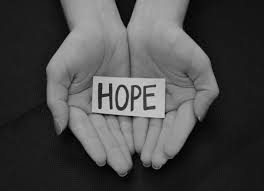Napoleon wrote, “A leader is a dealer in hope.” I love that. The ability to create and stir up hope in others is one of the trademarks of great leadership. Hope is a core desire to see something come to completion and fulfillment.
 In a business or an organization, it is the leader who must be able to influence others to see and pursue the preferred future. The success of an organization hinges on bringing hope to the entire team. People must at some point embrace the vision as their own. When this happens, hope has taken root.
In a business or an organization, it is the leader who must be able to influence others to see and pursue the preferred future. The success of an organization hinges on bringing hope to the entire team. People must at some point embrace the vision as their own. When this happens, hope has taken root.
I’m reflecting this week as the church I founded is opening up a park to bless our city. Five acres of the 14 acre church site will be solely focused on providing an environment for families to gather and build memories.
When the church was two years old, we began assembling three city blocks of 48 individually-owned properties. It took a few months short of ten years to get the 48th piece. Along the way, a few folks gave up and thought the church would continue to rent a school cafetorium and never get its own place. But most discovered hope. They held on to that hope for the entire ten-year process. I look back and find it quite amazing that I was able to lead several hundred people to hope in a vision that became a reality.
I recently read a blog on hope by Mark Miller, author of “The Heart of Leadership,” I recognize now how much I was a dealer in hope over those years. How do leaders create hope? Mark Miller correctly notes at least four essential elements required for hope to emerge…
CHARACTER – Leadership skills are never enough to cultivate followship. To become a leader people want to follow also requires leadership character. When you and I are deemed trustworthy, we have the opportunity to plant the seeds of hope. Until then, we have little chance of success.
CLARITY – Vague generalities have limited power to stir hope. For you and I to talk about a better day has limited appeal. However, when we talk specifically about a preferred future, we have a chance at generating hope. Over the 10 years of assembling the three blocks of properties, we kept publically coloring in the poster board map of the 48 pieces, one by one, block by block.
COMPETENCE – People may initially follow a leader who they perceive to have character and delivers a clear message. But, they won’t follow that leader for long if they sense a lack of competence. Without this confidence in a person’s competence, there can be no hope. People see leaders without competence as imposters – not dealers in hope.
CONSTANCY – I mean unchanging or unwavering. Mark Miller said it best, “Leaders understand more than most that progress is rarely a straight line and it is almost always opposed. When the path into the future becomes difficult, it’s easy for people to want to abandon the journey. It is often the leader’s unwavering and unchanging vision that will stem the tide of disbelief and skepticism. Leaders must stay on message regardless of challenges and setbacks or hope will be lost.” Yep! So very true!
Hope, and the ability to generate it, is a big part of what we do as leaders. But the truth is, at some point, we must deliver. Hope without progress is unsustainable. It actually fades rather quickly. I’m so grateful to have the privilege of being a dealer of hope. And even more, I’m thankful I’ve been able to raise up the next generation of young leaders who are outstanding hope dealers.
And, even more powerful, is the reality that leaders are more than dealers in hope; we create the future. That’s what ultimately keeps hope alive!
QUESTION: What additional elements do you think are required for hope to emerge? I’d love to hear it!


One response to A Hope Dealer